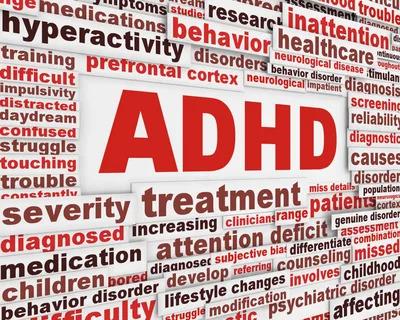Overview
The neurodevelopmental disorder known as Attention Deficit Hyperactivity Disorder (ADHD) is typified by impulsivity, hyperactivity, and inattention. While treating ADHD frequently concentrates on enhancing focus and decreasing hyperactivity, impulsivity and dangerous behaviors must also be addressed if long-term well-being and optimal results are to be achieved. In this piece, we discuss the importance of treating impulsivity and risky behaviors in the treatment of ADHD, looking at various approaches, therapies, and the effects they have on people’s life.
Knowing ADHD’s Impulsivity and Dangerous Behaviors
Impulsivity is a defining characteristic of ADHD that shows up as a propensity to act without thinking things through or weighing the possible outcomes. People with ADHD may have trouble controlling their impulses in a variety of areas, which can result in rash decisions, trouble postponing gratification, and engaging in dangerous activities. These actions can have serious repercussions, such as poor academic performance, strained social bonds, and a higher chance of mishaps or injury.
Addressing impulsivity and dangerous behaviors is essential to improving people’s safety, wellbeing, and general functioning when treating ADHD. Treatment therapies attempt to reduce the negative effects of impulsive behaviors and enhance adaptive coping skills by providing individuals with ADHD with efficient tools for managing impulsivity and making informed decisions.
Important Techniques for Handling Impulsivity and Dangerous Behaviors
Cognitive-Behavioral Strategies:
As part of the treatment of ADHD, cognitive-behavioral therapy (CBT) provides evidence-based methods for managing impulsivity and risky behaviors. The main goals of cognitive behavioral therapy (CBT) therapies are to challenge erroneous thought patterns, identify triggers for impulsive behavior, and create alternative coping mechanisms. People with ADHD can learn to make more thoughtful and informed decisions by developing self-regulation skills and raising awareness of the repercussions of impulsive behaviors.
Increased self-regulation and impulse control are made possible by mindfulness techniques, which raise awareness of one’s thoughts, feelings, and physical sensations. Mindfulness-based interventions are used in ADHD therapy to help patients select intentional responses over automatic ones by teaching them to observe their impulses without passing judgment and to adopt a non-reactive position. People who integrate mindfulness practices into their regular routines can become more resilient to impulsive tendencies and more self-aware.
Training in Executive Functioning:
Impaired executive functioning is linked to impulsivity as well as trouble setting priorities and organizing and planning work. Treatment for ADHD involves strategies to enhance executive functioning, including goal-setting, task start, and time management. Treatment treatments improve people’s capacity to control their behavior and make wise decisions by teaching them techniques for dividing work into manageable steps, creating realistic goals, and using outside cues and reminders.
Behavioral Modification Strategies:
To control impulsivity and encourage desired actions, behavior modification strategies like reinforcement schedules and contingency management offer structure and rewards. conduct modification methods discourage impulsive conduct and create clear expectations, rewards, and penalties for adaptive behavior while treating ADHD. People with ADHD can learn to self-regulate and exert more control over their actions by regularly and methodically rewarding positive behaviors.
Putting Interventions into Practice for Treating ADHD
In order to effectively treat impulsivity and risky behaviors in individuals with ADHD, a multimodal strategy that incorporates a range of interventions and methods customized to meet the requirements and preferences of each patient is necessary. Important elements of putting interventions into practice are:
Comprehensive Assessment:
Creating focused intervention strategies requires a detailed evaluation of each person’s assets, weaknesses, and problem areas related to impulsivity and risky behavior. Assessing impulsive patterns and the severity of risky behaviors is made easier for therapists by the use of assessment instruments including behavior rating scales, self-report measures, and clinical interviews.
Collaborative Treatment Planning:
Working together with people who have ADHD and their families or caregivers guarantees that intervention strategies are customized to meet their specific needs and objectives. Planning a treatment program includes talking about possible interventions, laying out reasonable expectations, and creating specific goals for dealing with hazardous and impulsive conduct. Participating in decision-making gives patients the ability to actively participate in their care and encourages them to follow through on intervention plans.
Building Skills and Practice:
The key to promoting skill acquisition and mastery is to expose people to coping mechanisms and decision-making techniques for controlling impulsivity. Treatment for ADHD may include skills training workshops, psychoeducational sessions, and supervised practice activities to educate patients how to identify impulsive urges, weigh the pros and drawbacks, and effectively use alternate reactions.
Ongoing Support and Monitoring:
Two essential elements of treating ADHD are keeping an eye on patients’ development and offering continuous support. Interventions stay relevant and effective over time when regular check-ins, feedback sessions, and plan modifications are made in response to individual reactions and feedback. Giving people access to online forums or peer support groups also makes it easier for others to support and reinforce adaptive behaviors in one another.
In summary
Addressing impulsivity and dangerous behaviors is crucial to the holistic approach to treating ADHD because it maximizes results and supports people’s safety, wellbeing, and functioning. Treatment interventions for ADHD provide individuals with the necessary tools and resources to effectively manage impulsivity and make informed decisions. These resources include executive functioning skills training, mindfulness practices, and behavior modification techniques, all of which are evidence-based. Interventions targeting impulsivity and risky behaviors improve people’s self-regulation, adaptive coping mechanisms, and general quality of life by working together with clinicians, individuals with ADHD, and their support systems.



